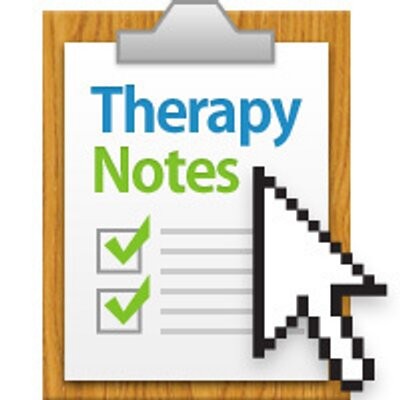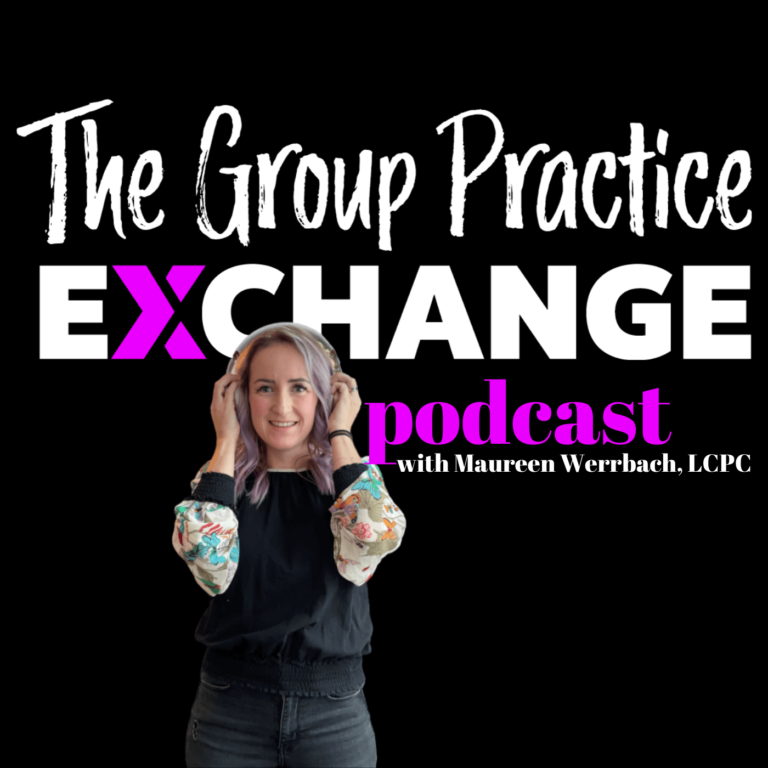Post Views: 199
- Home
- Podcast
Episode 230 | Personalizing Benefits to Meet Employees’ Unique Needs with Courtenay Shipley

WITH Courtenay Shipley
00:00
00:00
- Episode 230 | Personalizing Benefits to Meet Employees’ Unique Needs with Courtenay Shipley 00:00
Share
Have you ever wondered how to personalize retirement benefits for your employees?
In this episode, I had the pleasure of chatting with Courtenay Shipley, a business retirement plan owner, about just that. We dive into different retirement plans like 401(k)s, IRAs, SIMPLE IRAs, and SEP IRAs, and discuss the importance of tailoring these plans to specific groups. Courtenay also shares insights on profit sharing and the safe harbor plan design. Listen in to learn more about:
- The importance of personalizing retirement benefits for employees
- Exploring different retirement plans like 401(k)s, IRAs, SIMPLE IRAs, and SEP IRAs
- Benefits of profit sharing and the safe harbor plan design
- Limitations of payroll companies like Gusto for managing benefits
- Alternative options like Guideline and Vestwell for managing retirement plans
If you’re looking to provide the best retirement benefits for your staff, this episode is a must-listen. Join us as we dive into the world of retirement plans and discover how to tailor them to your practice’s specific needs. Let’s make benefit planning a breeze!
Thanks for listening! Like what you heard? Give us 5 stars on whatever platform you’re listening from. Need extra support? Join The Exchange, a membership community just for group practice owners on our website www.thegrouppracticeexchange.com/exchange. Talk to you next time!
Resources mentioned in this episode:
IRS Website for for SIMPLE IRAs
Connect with Maureen Werrbach & The Group Practice Exchange:
This episode is sponsored by TherapyNotes. TherapyNotes is an EHR software that helps behavioral health professionals manage their practice with confidence and efficiency. I use TherapyNotes in my own group practice and love its amazing support team, billing features, and scheduling capabilities. It serves us well as a large group practice owner.
Do you ever wish for a financial therapist who could relieve you from the last few months of bookkeeping, talk you off the edge when you’re running into issues with Quickbooks, or help you work through a profit plan for growth? GreenOak Accounting does just that! GreenOak Accounting is an accounting firm that specializes in working with group practices. Their value goes WAY beyond bookkeeping; they can help you get on track for financial success. Schedule a free consultation by going to http://greenoakaccounting.com/tgpe
Transcript:
Maureen Werrbach
Maureen Werrbach (00:00:01) – You’re listening to the group Practice Exchange podcast where the business development resource for group practice owners, where we talk candidly about business ownership and leadership from practice building tips to live coaching to real talk episodes with other group practice owners where the resource you’ve been looking for to help you grow your group practice. I’m your host, group practice owner and entrepreneur Maureen Werrbach.
This episode is sponsored by TherapyNotes, TherapyNotes is an online practice management and billing software designed for mental health professionals. Therapy Notes says everything you need to manage patient records, schedule appointments, create rich documentation and bill insurance right at your fingertips. They offer free and unlimited live support seven days a week. Their streamlined software is accessible wherever and whenever you need it. To get two free months, go to www.therapynotes.com/thegrouppracticeexchange.
Need a new accountant or bookkeeper? Meet Greenoak Accounting, an accounting firm that works specifically with private practices. They do all of your accounting needs from budgeting to accounting to bookkeeping and payroll to building your dashboard. On top of that, they can help you set up your profit. First systems go to greenoakaccounting.com and mention The Group Practice Exchange for $100 off your first month.
Hey everyone, welcome back. Today I have Courtney Shipley on. She owns a business retirement plan which by the way, I love the name of your business. Thank you. And we’re gonna be talking about like, how to personalize retirement benefits to help meet your employees needs. I know as the beginning of the year is just right around the corner, it’s time where US group practice owners tend to be really focusing on, you know, the benefits that we offer our employees and this being one of them. And so I’m really happy to have you on to share a little bit of your expertise. So before we jump into that, if you can just introduce yourself and your business and we’ll just jump in from there. Yeah, sure. So Courtney Shipley.
Courtenay Shipley (00:02:09) – With retirement plans and we work with companies on setting up employee retirement plans and helping them kind of navigate that maze and keep them going to meet the needs of their evolving business.
Maureen Werrbach (00:02:22) – Awesome. So, like I had mentioned, by the time this recording comes out, it’ll still be before the beginning of the year. And so I know my own group practice. My executive director and I are thinking about the benefits that we have been offering the past year, any changes we want to make or additions we want to make. And when it comes specifically to retirement planning and retirement benefits, there’s obviously a handful of different things you can do. And I feel like a lot of the questions that come up specifically around that is 401 is, should we be offering, should we be offering IRAs? The difference between those also, like navigating what you as a business owner needs with what you can offer your team, which obviously you can’t give yourself things that are different than what you’re going to offer your employees in terms of retirement benefits and then like percentages, what to match and just being in mind you’re matching percentages with like potential future benefits that you want to offer. Because once you sort of give a percentage, it’s usually pretty hard to go backwards on that.
Maureen Werrbach (00:03:25) – And I’ve seen a lot of practice owners who go right to like 4% matching and then end up realizing how hard it is to maintain if they wanted to add any additional benefits. So I know I just said a lot in a few minutes, but what is maybe your first piece of feedback for practice owners who already have retirement plans for their employees, but maybe aren’t sure if they’re even using the right type of plans?
Courtenay Shipley (00:03:49) – Sure. So you’re going to want to think about what you want to accomplish with the plan. Like every plan has a purpose, and if it’s just to give the owner the chance to save for retirement, that’s okay. If it’s to give back to everybody in the form of profit sharing because they’ve helped to grow the business, or they’ve had impact on the way that the finances go, that’s a good reason to. It might just be because you have to offer a competitive package in order for recruiting purposes or even retention purposes, like, why would I stay here if I could go somewhere else and get better things? So it’s important to be thoughtful about why you have it in the first place.
Courtenay Shipley (00:04:27) – That’s where you start. Yep. And then what it is you want to accomplish. So the 401 K plan is kind of the one that everybody knows the most. Those are the ones that we work on. If it’s a nonprofit it’s a 403 B, but otherwise there’s also what’s called a simple IRA and a Sep IRA. And all of those are a little bit different. The 401 K plan is kind of what you’ve graduated to. It’s at the top of the pyramid. So if you’re just starting out, the others are an IRA program or probably the ones to investigate first. But with 41K it gives you like a fair amount of flexibility. And it also gives you the ability, like you said, to do some matching or to do some optional matching. I should say too, at the end of the year, we always tend to encourage people to have more flexible plan designs if we can make it happen. So saying things like you have the option of making a contribution to your employees at the end of the year, either as a match or as some other way, or we start with like a stated match, like you mentioned before, or we’re just going to give everybody 3%.
Courtenay Shipley (00:05:29) – That is the benefit that the employer is going to give, and then the employees can put some more in on top of that. So there’s several different ways to accomplish it. But your budget obviously is the thing that matters the most. Yep. And you have to take into consideration the tax savings that you get. Because when employees save and then when you, as the employer put money in, that does help your taxes. So sometimes it doesn’t hit your pocketbook quite as hard as you thought. That’s where your accountant is, your right hand person.
Maureen Werrbach (00:05:52) – So you mentioned something just now that I actually have a question on. And I love when I do interviews with people where I’m asking questions that I am also intrigued by, because a lot of times because my. Business has been around for so long. A lot of questions I’m asking come more from a place of what I know newer or smaller practice owners might want to know, but I sort of have already been past that. But this you were talking about profit sharing and like not just the retirement matching where you’re matching an X percentage, but some additional optional things.
Maureen Werrbach (00:06:23) – This goes beyond my knowledge and experience as a good practice owner. So if you can elaborate on those two pieces that would be awesome.
Courtenay Shipley (00:06:30) – Yeah no problem. So profit sharing is what it sounds like, right? You are determining at the end of the year or after the year is over, really, before you file your corporate taxes, whether or not you’ve got some extra money that you would like to redistribute among everybody. So maybe you’re going to have everybody a stated amount. I’m going to give everyone $500, or I’m going to give everybody 2% of their pay or something along those lines, and you can be pretty flexible with that. You can choose some different plan designs there. You can also do certain things that will incorporate like Social Security benefits or age. So if you people who are close to retirement, they could get a higher benefit just because they’re closer to retirement. And the people who are younger have a longer time for that money to be invested. So there’s lots of tests that get performed by some math geeks that we partner with, and they are the ones that can keep you within the guardrails of what you’re allowed to do.
Courtenay Shipley (00:07:23) – But you do have a fair amount of flexibility. And normally when we set up borrowing plans, we try to put that in there as discretionary. So you can decide from year to year if that’s something that you would like to do as the business owner. The other thing is everyone tends to start off the 401 plan, and they hear about this thing called a safe harbor plan design. And what that means is that it’s your get out of jail free card a little bit. It’s a way to bypass the nondiscrimination testing and basically nondiscrimination testing for your audience. It’s going to be the IRS does not want people who are less compensated, less highly compensated guests than an owner to not be benefiting from the plan as much they know what the owners to be using it and the other employees not in other words. So that means that you can either give them a match up to 4%, or you can give everybody 3% whether or not they contribute. Well, the other option is you could just start off and see how that nondiscrimination testing goes, and you could just have an optional match.
Courtenay Shipley (00:08:24) – So at the end of the year, again, you’re taking stock of what happened over the year, your profitability. ET cetera. And then saying, okay, I do want to give everybody a benefit either as a match or just as a straight up like employer contribution. So again, you build that in a discretionary and you want to have somebody like us who are helping watch over the plan to make sure it’s going to go the way we want it to go, but that those are features that most people don’t think about. They kind of just sign up and say, give me the plan in the box. Yeah, I was.
Maureen Werrbach (00:08:53) – Going to say, I feel like that’s probably most of us in our industry especially. I guess it makes sense if this isn’t our specialty. And so I notice that group practice owners really look at what other practice owners are doing. And if there isn’t anyone that’s really researching and going in depth on what they can offer, then that sort of trickles down. And so what is your suggestion for? Because I feel like a lot of people will just use gusto.
Maureen Werrbach (00:09:18) – It’s a payroll company and I don’t know if you know them, but that’s usually also where they’ll add their benefits is through there, because gusto has different types of benefits that you can just offer directly through there. And it’s obviously easy because it’s all in one place where you do your payroll, but think that the drawback of that is that they don’t always have because they’re a payroll company, they don’t always have the knowledge or maybe ability to actually kind of go in depth, like what you’re saying, and really provide all the options beyond the basic of do you want to offer retirement matching to your employees? Do you want it as a 401 K or as a simple IRA? Do you want to match 2% and then just sort of case shut? Can you let my audience know? Like what is your suggestion for when you are wanting to either change your retirement plans or really look deeply into them, or if you don’t have any retirement plans but you’re thinking about it, what the good first step is. Because I think maybe using things like gusto might not be the best.
Courtenay Shipley (00:10:16) – Well, if you’re just getting started, guideline and vest well, I think are both vendors that gusto has already built out an integration with, and I think that they’ve got several others that are coming online here very soon. And the reason that’s important is that your payroll information is the same information that goes into your 401 plan. So your employees, their date of birth or date of hire, like all that information has to get over there. And then when you run payroll, the contributions to the retirement plan have to get moved over into the 401 K plan. And the file that says how much everybody put in has to go there too. So I don’t see anything wrong with as a place to start. Use the decision tree if you will. Do go simple IRA. Does anybody? We want to save more than 17 or $18,000. And if the answer is yes, then go to the 401. Like there’s some pretty good basic building blocks in there that can help you make those decisions really quickly. And of course, I will top people out of 401 all day, because the simple IRA is just that.
Courtenay Shipley (00:11:18) – It’s simple. There’s no final tax filing every year. There’s no nondiscrimination testing. Like it’s a great way to get started. And for a lot of businesses, that’s a good way to go. But once you’ve gotten to the place where you want to do some of those optional provisions I just talked about, or you’ve got people who really want to max out their retirement plan than the 401 is the one with the highest limit for what you can put away. So those are kind of some major differences. And when you go to look at, okay, our payrolls with gusto, who do we have an integration with that. For small businesses it should be a question that’s asked. Right. Because you just don’t have bandwidth.
Maureen Werrbach (00:11:52) – As you’re talking. And like my financial planner, Mary Beth has for years now been like, because I personally maxed out all of my different types of retirement. And she’s like, you need to do a 401 K because you need to put more weight than what is allowed through the different retirement plans I have.
Maureen Werrbach (00:12:10) – And all I know is that it feels like it’s a lot of work and like you said, and I just keep pushing it off every year and being like, next year, Mary Beth. And I’m sure as she listens to this later, she’s going to be like, but guess my question is for those, because I know a lot of listeners already have retirement plans and likely simple because it’s like you said, it’s the easy starting point. What is the process like to shift to foreign cakes? I think that’s one of the big reasons why I haven’t, is it feels like a lot of work and human behavior in the workforce is that change is hard for employees, even if it’s a potential positive one. And so have like 60 something employees. And all I think of is like, I’m going to have to have the conversations with so many people, and there’s going to be people who don’t understand why we’re changing it or who might like it. Simple. And my mom, who does our payroll, has to manually because we don’t do it through gusto manually.
Maureen Werrbach (00:13:06) – Vanguard. We have to she has to manually take all the payroll numbers, plop them into Vanguard every single time we do payroll. I know that also would be a nice thing to be able to simplify. Yeah, but what is you, I guess your recommendation when you work with business owners who are making a change, like maybe some of the common things you see around hiccups or concerns maybe.
Courtenay Shipley (00:13:27) – Right. So if you have the simple in place already, then you can convert to a 401 so you can stop the simple and start A41K. But there is some timing associated with that, and I’m feverishly looking for it on the IRS website right now, and I’m going to find it. But the important thing is that for for one K plan to know there’s no time of year to set it up, but there is a time that you have to end a simple IRA. The other thing is the education that goes out to your employees. Like you said, it’s we’re still giving you a great benefit. We’re now giving you more flexibility in your plan.
Courtenay Shipley (00:14:01) – You can still pick your own options, but we’ve streamlined the menu for you of investments that you can pick from. So it’s a little bit easier than here. Set up your simple IRA and go to town. So there’s a little bit more oversight from the employer. There’s going to be a little bit more education. And you know that higher limit is attractive to some people who are trying to save more for retirement. So those are good things. And those are all good things on the back end. What does it look like on your end to end? A simple IRA is not that hard, but basically it’s a form that goes to the IRS. But starting a 400 and K plan takes. If you give yourself 60 to 90 days before you want it to actually start, then you’ll have plenty of runway to be relaxed about it. Now, can you start a plan sooner than that? Yes, in some cases you can. But you definitely want to work with someone like me if that’s the case.
Courtenay Shipley (00:14:47) – So your considerations were right about your mom having to take the payroll file and put it, you know, upload it to Vanguard. And that’s all that would happen. If you get a 401 K plan that does not have any sort of linkage with your payroll system. That’s what it feels like, is just every payroll. There’s one more step to it. As far as enrolling employees, most places nowadays do it through online portals instead of collecting up enrollment forms, things like that. But they will need to be educated about it. Like what is this thing? How do I enroll? How much do I decide to take out of my paycheck? ET cetera. So that will take a minute. Probably do it away from the time that you set up, like your health insurance or disability, just so there’s no confusion. And what else could you run into? Is everybody paid from the same bank account at the same time? So those are some things that you’d want to be upfront with. And yeah, you’re definitely going to get questions.
Courtenay Shipley (00:15:40) – So when it comes to the 401 plan there’s the record keeper. The document administrator sometimes is the same company like Vanguard does both as you mentioned a minute ago. And then having like an outside advisor like us or even like you’re Mary Beth, you were talking about to give that level of advice and education to employees that you’re out of the middle of. It is very valuable. But typically, if you’re hiring somebody who is specifically focused on retirement plans, they’re going to help you through all of those steps and make it as frictionless as possible.
Maureen Werrbach (00:16:12) – Thanks for that. I have one last question because I know we’re getting towards the end here. You mentioned different options outside of like the regular just retirement percentage matching, one of those being profit sharing. What are maybe a couple of the options because this is where I’m like, I don’t know what that even means. Like what other options are there. Can you name a couple of what that would look like?
Courtenay Shipley (00:16:36) – Yeah. So basically think of it as employees put their money in, employer puts their money in.
Courtenay Shipley (00:16:41) – So on the employer side is just how do you want to get that in there. Do you want it to be something that comes out of your payroll for the whole year, so that from a cash flow standpoint, it might be easier? Do you want to contribute at the end of the year? Do you want to match people? So you’re only giving them money if they are also participating in the plan? And then do you want to just wait until the year is over and then figure all of that out? Those are the basic buckets that they fall into. Now on the profit sharing. You could give everybody the same percentage of pay. You could say everybody, we did great this year. I’m giving everyone 2% of their pay. Or you could say everybody we did awesome. I’m giving you $500 into your 401 K, or you may look at your employee base and say this subset of employees are I don’t want to say more valuable, but they contributed more to the profit sharing number than the rest.
Courtenay Shipley (00:17:36) – You could, in theory, put maybe more contributions towards that group. You have to be really careful that you don’t get outside of the IRS rules. Obviously, your other option could be that you say, we have a plan that integrates Social Security wages so that the people who are above that Social Security wage, they actually get a few more dollars because they don’t get as much from Social Security. You could say that it’s an age weighted plan. So our older employees, they actually get higher benefit because they’re closer to retirement and don’t have as long for the money to be invested. So it depends. Like in a dentist group, I often see the age weighted because the dentist is so much older than the rest of the staff or something like that, but it’s all over the map. So what matters is really getting the design right for the group that you have.
Maureen Werrbach (00:18:22) – Yeah, thank you so much for that. So if people are interested in getting maybe more support with you or learning more about you, where can they go?
Courtenay Shipley (00:18:30) – Yeah.
Courtenay Shipley (00:18:30) – So they can go to our website which is retirement plan ology slash learn more. And there there’s a bunch of different things that you can look at some resources on what we talked about today. Also our blog is there. Of course, if you want to read our nerdy thoughts on the retirement plan industry, but that’s the best way you can also find me on LinkedIn. I and see Shipley very easy.
Maureen Werrbach (00:18:52) – Awesome! I appreciate you coming on today and sharing your knowledge. And yeah, I feel like it’s timing wise, perfect. Just because we’re getting to that time of year where we’re thinking about the benefits that we offer our employees, and also the benefits that we might be needing for ourselves as well.
Courtenay Shipley (00:19:09) – That sounds good. Thank you so much for having me.
Maureen Werrbach (00:19:13) – Thanks for listening to the group Practice Exchange podcast, like what you heard, give us five stars on whatever platform you’re listening from. Need extra support? Join The Exchange, a membership community just for group practice owners with monthly office hours, live webinars, and a library of trainings ready for you to dive into. Visit www.members.thegrouppracticeexchange.com. See you next week.
Thanks For Listening
Thanks for listening to the group practice exchange podcast. Like what you heard? Give us five stars on whatever platform you’re listening from. Need extra suppor? Join The Exchange, a membership community just for group practice owners with monthly office hours, live webinars, and a library of trainings ready for you to dive into visit www dot members dot the group practice exchange dot com forward slash exchange. See you next week.
Resources
Here are the resources and guides we recommend based on this episode

Specialized Accounting for Private Practice
At GreenOak Accounting, we offer accounting services that cater specifically to solo and group therapy practices. Our services range from bookkeeping to budgeting & forecasting, Profit First support, profitability analysis, payroll, tax preparation, compensation analysis, and much more.
Through working with over 100+ therapist clients, we have seen what works and what doesn’t, so our team can help guide you on the path to financial. Our specialized services can be customized based on the size and needs of your private practice.
For more information about our packages and the different ways to work with us, please visit our website at https://www.greenoakaccounting.com/ and schedule a complimentary consultation with one of our team members!

*Need a good EHR for your group practice? TherapyNotes is it. I’ve been using it for years in my own group practice, and it does really well when it comes to having the features group practice owners need. Try it out for FREE for 2 months by clicking here.
* I am an affiliate for some of the businesses I recommend. These are companies that I use in my own group practice, and make recommendations based off of my experience with them. When you use some of these companies through my links, I receive compensation, which helps me continue to offer great free information on my podcast, blog, Facebook group, and website.
Related Episodes
Meet your host
Maureen
Maureen Werrbach is a psychotherapist, group practice owner and group practice coach. Learn more about her coaching services here:
About
The show
The podcast is structured so that you get practice building tips in small doses, where an episode can be listened to (and a group practice building lesson can be learned) in a single car ride.
Episodes are structured into categories: coaching sessions where I coach a group practice owner on a specific topic, tips of the day by yours truly, real talk where you get to be a fly on the wall while an established group practice owner and I talk about the highs and lows of ownership, and trainings done by experts in the field.
Don’t miss an episode! Download The Group Practice Exchange Podcast on iTunes, Stitcher or Google Play and don’t forget to subscribe and rate TGPE
* The content of this post is intended to serve as general advice and information. It is not to be taken as legal advice and may not account for all rules and regulations in every jurisdiction. For legal advice, please contact an attorney.





